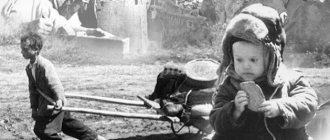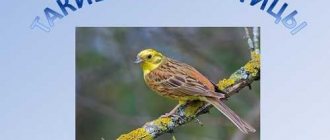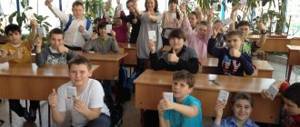Presentation “The world of plants: what are they?” for pre-school children
Voronkova Alena Dmitrievna
Presentation “The world of plants: what are they?” for pre-school children
Presentation “The world of plants : What are they ?” for pre-school children
Prepared by the teacher of the school preparatory group Alena Dmitrievna Voronkova.
This presentation for preschoolers provides information about the structure of plants and the functions of their parts in an accessible form.
Educational areas: cognitive and speech development, physical development.
Slide captions:
Plant structure
Tree structure
1. Root: what is it for? The root is the lower part of the plant , which is almost always hidden underground.
1. The root provides soil nutrition to the plant ; it absorbs water and other useful substances from the ground.
2. The root holds the plant firmly in the soil so that neither strong winds nor heavy rains can pull out or wash the plant out of the soil . The root is not only strong, but also flexible.
With the help of a root, a plant can grow something similar to itself . In this case, adventitious buds are formed on the roots. Shoots then develop from them. They can be separated from the plant and live independently (for example, dandelion, plum, raspberry, lilac)
3. Another function of the root is to store nutrients. In a number of plants they are deposited in the roots
Types of roots:
If the soil is low in water, very dry, or too far underground, the plant's roots become long . In a taproot system, the main root is highly developed and clearly visible among other roots.
These are plants - saxaul and camel thorn, which camels feed on.
There are also plants with a tap root in our forest - these are spruce and birch.
And among herbaceous plants and flowers, clover and lupine are well known.
If the plant lives where there is enough water, its roots are located near the surface of the earth and look like a sponge. This root is called fibrous. The fibrous root system consists of a large number of roots almost equal in length.
Palms, ferns, wheat, marigolds, plantains, and bells have fibrous root systems.
Some plants deposit reserve nutrients in the roots, such formations are called roots.
People grow root vegetables in the garden. Root vegetables are eaten by people and fed to animals.
2.Stem: what is it for? The stem is the axial part of the shoot that produces plant .
The stem serves as a support for flowers and leaves of plants , supports it like a rod, and reaches towards the light.
Water and nutrients move along the stem from the roots and leaves; Air nutrition is provided through the stem.
Protects the plant from harmful environmental influences.
Some plant are capable of reproducing others like themselves using their stems.
Plants whose stems are green and flexible are called herbaceous.
Woody stems of trees. They are tough and covered with bark.
Types of stems:
• Erect stem
Erect stems grow vertically upward and do not need any support. Such stems are found in sunflowers, nettles, and woody plants .
• Creeping stem
Creeping stems spread along the ground and take root in the soil with the help of adventitious roots. Such stems develop in strawberries and clover.
• Curly stem
Climbing stems carry leaves toward the light, twining around erect stems or artificial supports. These are the stems of bindweed and common hop.
• Clinging stem
Clinging stems rise upward, attaching to the support with tendrils (peas, mouse peas, cucumber, grapes)
.
Climbing and clinging plants are called VINES 3. Leaves: what are they for? Leaves are the organ of air nutrition and respiration of plants . They are attached to the stem.
• Through the leaves, with sufficient lighting, the plant absorbs carbon dioxide from the air for nutrition and releases oxygen: thanks to the plants , the air is saturated with oxygen necessary for all living things.
• The plant cools itself by evaporating moisture through the leaves and creating shade with them.
• Some plant are capable of reproducing their own kind from leaves.
• Leaves modified into spines serve as protection from unfavorable conditions (moisture evaporates less through them and is not suitable for food for many animals and insects). And some plants have adapted their leaves into insect catching devices. In some plants, the leaves have changed into flagella and provide support for it.
Types of leaves:. Simple and complex in structure, unmodified leaves that serve to enrich the plant with nutrients
In cacti and some other plants, the leaves change into spines. This leaf shape allows for a sharp reduction in water evaporation and protects against being eaten by animals.
Trap leaves are characteristic of “carnivorous” plants .
Perhaps this is the most interesting and exotic modification. Oddly enough, the leaves change into “traps” not because the plant is evil , but because it grows on soils that are extremely poor in minerals. For example, our “countrywoman” Rosyanka lives in peat bogs, where there is no soil at all. In the Venus flytrap, the halves of the leaf, covered with spines, can move and turn. when an insect lands on such a leaf, the halves slam shut, and the victim ends up in a trap, where it is digested under the influence of digestive juices secreted by the glands of the leaf.
The leaves of the Jug plant have the shape of a jug with a lid. Along the edges of such a jug there is bait in the form of nectar, and at the bottom there is digestive juice. The walls of the jug are very slippery, and an insect that falls inside will not be able to get out.
Some plants are characterized by succulent , fleshy, water-storing leaves. Such leaves have a dense waxy cuticle and special moisture-storing cells.
For example, the well-known aloe (agave)
.Flowers: what are they for? A flower is a modified, shortened, unbranched shoot with limited growth, intended for pollination and the production of seeds and fruits.
• Flowers serve to attract insects or pollinating birds (such as hummingbirds)
.
The shape, color and smell of the petals are very diverse and attract insects that transport pollen grains from one flower to another. Flowers contain nectaries - special glands that produce nectar - a sugary liquid. Many species of insects, some species of birds and animals feed on it. Nectar is the main component of honey. Many herbs produce large amounts of nectar, which bees use to make honey, and the plants are considered honey-bearing plants.
• By pollination with pollen, fruits and seeds are formed.
•Structure of a flower: In the stamen there is a filament on which the anther with pollen is located. The pistil consists of an ovary and a stigma. The stigma, which is sticky to the touch, catches pollen. This process is called pollination. Pollen grows through the style towards the ovary , where fertilization of the ovules and seed maturation occurs. The perianth is usually double and consists of greenish sepals of the calyx and brightly colored petals of the corolla. The perianth protects and promotes pollination.
5.Fruits: what are they for? The fruit is a modified flower.
• Serves for the formation, preservation and distribution of seeds contained in it.
Types of fruits:
Seeds: what are they for? Seeds are the embryonic plant , supplied with a supply of nutrients and protected by the seed coat. The seed serves to disperse plants and survive unfavorable conditions.
• The seed coat reliably protects the seed from drying out, mechanical damage, temperature changes, and the penetration of bacteria. It is often painted in different colors. The means of protecting the seed is not only the strong seed coat, but also various substances with a pungent odor and taste. The seeds of some plants contain toxic substances that also perform a protective function.
Game: Find out the grain!
List of materials used:
1. Presentation https://www.myshared.ru/slide/285127/
2. Scienceland. Articles on science and mathematics
https://scienceland.info/biology6/root-purpose
3. Pictures from www.google.ru
4. Wenger L. A. Development
.
Development of activities for children of senior preschool age - 1991
5. Classification of stems https://www.yaklass.ru/p/biologia/bakterii-griby-rasteniya/organy-tcvetkovykh-rastenii-14403/pobeg-stebel-list-i-pochki -14008
6. Definition and description of plants https://parohod.kg/znakomstvo_priroda/635-k-opredeleniju-i-opisaniju-rastenii.html
7. Modification of leaves https://myblog-bio.blogspot.ru/2012/05/blog-post_14:
8. Seed: structure and functions https://wiki-med.com/
Presentation on the world around us “Amazing Plants”
The thickest tree on Earth.
The trunk width is 10 meters in diameter, height is 20 meters.
Lives for approximately a thousand years. Lives in African savannas.
On these “roots” edible fruits grow, similar to large cucumbers. Monkeys love them very much. For this reason, the baobab was nicknamed “Monkey breadfruit tree”
After the rains, the baobab tree blooms. The flowers are large, fragrant, each flower lives only one night.
The tallest tree on Earth. Its height is 120 meters. Lives on mainland Australia.
This plant has very interesting leaves: they are edge-facing to the sun.
In this way, they are protected from sunburn. The thickness of the tree trunk is up to 1 meter in diameter.
Eucalyptus wood is very dense and heavy. It sinks in water, but does not rot. Eucalyptus absorbs a lot of water. It is called the "pump tree". It evaporates 320 liters per day.
The largest type of eucalyptus is the Regal. Reaches 152 meters. He is growing very quickly. It grows 1 meter in a year.
The tree trunk resembles a bottle with a diameter of 15 meters.
The stem is hollow inside and fills with water during the rainy season.
This “tree is a flask”, that’s what they say about it.
Flowers and fruits are located directly on the trunk.
The seeds are very nutritious. They contain fats and proteins. These seeds relieve fatigue.
Cocoa is obtained from the seeds of the bottle tree - a well-known powder for the drink of the same name.
The birthplace of the bottle tree is Africa
A very interesting plant, from the juice of which people have learned to obtain rubber.
Hevea is native to Central America. The characteristics of this plant were first described by Christopher Columbus.
The Indians made waterproof galoshes and balls from hevea for children and adults to play with.
Later, Hevea juice began to be used to make tires for cars.
This is the largest tree in California. The trunk girth is 25 meters, height is 83 meters. The weight of an adult tree is 2500 tons. The sequoia or mammoth tree got its name due to the similarity of its crooked branches to the tusks of a mammoth.
- The wood of this plant is red. It is highly valued and almost never burns. Sequoia loves the sun and forms forests that are not afraid of fires. The leaves of this tree are modified into needles.
- This is a very ancient plant. It lived during the time of the dinosaurs.
This is an ancient coniferous plant. Its lifespan is 1.5 thousand years.
Ginkgo green leaves consist of two lobes, are very fragrant, and kill bacteria in the air. The seeds of this plant are edible, medicinal and delicious. The Japanese call them "silver apricot"
- Grows in the Seychelles Islands in the Indian Ocean;
- has very large fruits weighing 10-25 kg;
- Such a fruit ripens for 8-10 years;
- has fan-shaped leaves.





